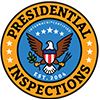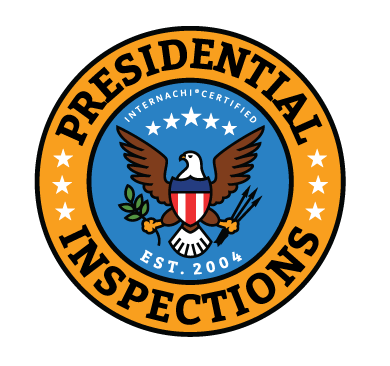Mold Inspection and Testing Services
Our mold inspection services are specifically designed to meticulously identify, assess and diagnose mold infestations in your residential or commercial property. Our team of certified and experienced inspectors utilize cutting-edge equipment and industry-standard methodologies to thoroughly examine your property for any signs of mold growth. We provide detailed and comprehensive reports documenting our findings and recommendations for mold remediation. Our foremost priority is the safety and well-being of our clients, and we strive to identify and address any potential mold issues in a prompt and efficient manner.

Learn more about our mold inspection
and assessment services
Frequent Causes of Mold Growth
- Basement flooding and water intrusion
- Closeness to lake, river, or ocean
- Clothes dryer exhausting into walls or attic
- Construction defects + poor workmanship
- Crawl space
- Firewood indoors
- Flooding
- Lot grading downward to home
- High indoor humidity [60%+]
- Humidifiers & vaporizers
- Inadequate ventilation
- Indoor plants
- Overflow from tubs, showers, sinks, & toilets
- Landscaping mistakes like mulch & plant glut
- Leaky roof
- Venting inadequacies in kitchen & bathrooms
- Sewage pipe leaks
- Siding water leaks
- Water supply pipe leaks
- Wooded setting keeps out sun
- Wet clothes
- Wet clothes drying indoors on clothes line
What is Mold?
Mold is a type of fungus that grows on plants and fibers and is most often associated with damp, musty locations such as bathrooms, basements and attics. Mold travels through the air as tiny spores which like to make their home in wet areas, where they will breed. If mold is spotted, it’s best to nip it in the bud immediately lest it spread to other areas. It’s also a good indication of a moisture problem, which should be dealt with as soon as possible.
Mold vs. Mildew
Mold and Mildew have many similar characteristics, but they are different types of fungi, and are often different in color and texture. Mold and mildew are often mentioned together as they can both grow in many of the same moist and warm locations. However, mildew is often found more often than mold in showers, paper and fabrics and mold is usually found more often than mildew in foods. They can sometimes be difficult to tell apart as they both spread out from spores. Mold is often black, green, red or blue in color while mildew is usually gray or white.
How to Eliminate Mold
To eliminate mold, you’ll first need to eliminate the source. Find out how and where moisture is seeping into your home and deal with it accordingly. If the area where mold is found isn’t too large, the moisture problem can probably be tackled by the homeowner. If it’s a large area, covering ten square feet or more, the homeowner is well advised to contact his local environmental protection group for a recommendation. A professional who deals with mold removal on a regular basis will most likely need to be called in.
10 Mold Facts for Homeowners, Landlords, Tenants, & Employers
- Airborne mold spores are everywhere both indoors and outdoors. Resident and employee health is at serious risk if there are elevated levels of mold spores indoors, as compared to an outdoor mold control test.
- The most dangerous indoor molds are Alternaria, Aspergillus, Chaetomium, Cladosporium, Fusarium, Mucor, Penicillium, and Stachybotrys. Mold testing and mold laboratory analysis are required to identify specific mold species.
- Molds spores can cause serious health problems even if the spores are dead or dormant (inactive while waiting for more moisture to resume growth). Even the smell of dead or dormant mold can make some mold-sensitive persons ill.
- It is impossible to get rid of all mold spores indoors. Some mold spores will always be present in house dust and floating in the air.
- The mold spores will not grow into mold colonies if there is insufficient moisture. Indoor mold growth can and should be prevented or controlled by controlling moisture indoors. If organic materials are wet for more than 24 hours, mold growth can begin.
- Mold grows by eating and destroying organic building materials and other cellulose-based materials such as carpeting, upholstery, and clothing. The longer that mold grows, the more mold damage to the building.
- Cellulose is the main substance in the cell walls of plants (and thus of wood), and it is used in the manufacture of many organic building materials such as drywall, plasterboard, plywood substitutes, and ceiling tiles.
- Mold can grow hidden and undetected inside wall and ceiling cavities; beneath wallpaper, paneling, and carpeting; and inside heating and cooling equipment and ducts, attics, crawl spaces, and basements.
- Mold growth is often the result of a structural or construction defect, or of maintenance neglect, that allows moisture to enter the building.
- The owner or employer must first fix the water problem (roof leak, plumbing leak, high indoor humidity) that enables the mold to grow. Effective mold remediation requires killing the mold with an EPA-registered fungicide, removing it, and treating the cleaned area with an EPA-registered preventive fungicidal coating.
Ready to Get Started?
Contact us for a quote!
Whether you’re looking to buy or sell a residential or commercial property, you need a trusted and reliable home inspector who can provide you with the information you need to make an informed decision.
We offer a range of services to meet your needs, including residential and commercial inspections, mold inspections, radon testing, and pest inspections. You can be confident that we will identify any issues that could impact the value, safety, or health of your property.
Don’t let unseen problems turn into costly headaches down the road – contact us today to schedule your inspection and get the peace of mind you deserve.


